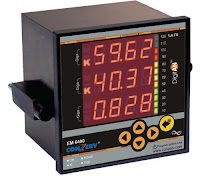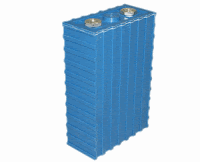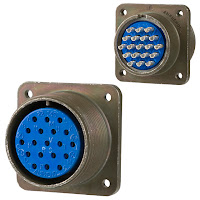
We finally did install the main battery box in the Mini Cooper project. This box was quite a wrestling match but we have completed fabrication of the box and installed it in the vehicle.
Brian's "sliding drawer" concept to allow us to move the top box to gain access to the gas tank battery boxes works pretty well. The slides cost over $500, and I've never actually lived in a house with a kitchen drawer that works, so I was a bit skeptical. But these slides seem to do the trick, and they are rated for 1000 lbs. We will have about 375 lbs of cells in this box - about half of the total weight of our 40 kW pack.
I'm a little weary of battery boxes frankly. That's pretty normal. As I've said before, battery placement and box fabrication is easily over half the effort of converting a vehicle to electric drive. Still, time for a breather.
So I started a new project. Post my charge station tirade, I decided to build myself one. Given a clean sheet of paper, the question then becomes "What would a Jack Rickard charge station look like?"
 I found the answer in Hickory North Carolina at the Finest Web Site for Gas Pumps. This guy is reproducing dozens of different kinds of gas pumps circa 1950's. They aren't restored vintage pumps. He makes them new. And they are not quite as solid as the originals. It is pretty thin tin and acrylic. But the result is eye catching, certainly nostalgic, and works quite well for our purposes. I wouldn't want to chop up a real vintage pump to make a charge station. But these reproductions are easy to work on and at $939, while not precisely a bargain, they add a bit of nostalgia to what is necessarily a pretty plain concept - an AC receptacle for an electric car.
I found the answer in Hickory North Carolina at the Finest Web Site for Gas Pumps. This guy is reproducing dozens of different kinds of gas pumps circa 1950's. They aren't restored vintage pumps. He makes them new. And they are not quite as solid as the originals. It is pretty thin tin and acrylic. But the result is eye catching, certainly nostalgic, and works quite well for our purposes. I wouldn't want to chop up a real vintage pump to make a charge station. But these reproductions are easy to work on and at $939, while not precisely a bargain, they add a bit of nostalgia to what is necessarily a pretty plain concept - an AC receptacle for an electric car.Of course, it grew into a bit of a project. We dug a shallow ditch down the west side of the garage and ran some 1 inch electrical conduit the length of the building. I put in a 100 Amp 2-pole circuit breaker in our Square D panel and ran some 10-3 interior wire through the conduit. This wire consists of three 10-gage insulated wires and a bare copper ground. You connect the red and black wires to the two poles on the circuit breaker, and the ground and white neutral wire to the ground bus bar in the box. This will give you two 120 vac phases - the classic 240 vac service.
This 240 vac is what almost all U.S. boxes provide. In your house, you primarily use 120 vac circuits from this box, broadly balanced across the two phases. But heavy load appliances such as electric dryers, electric range, and air conditioners typically do use 240 VAC.
Running a 240 VAC circuit is actually pretty easy. It is painful to watch all the angst among the ever faithful and generally abused Tesloids, and now the BMW Mini-E guys, over simply running a garage circuit from the box. The circuit breaker is $45 or so. The wiring is actually a little expensive - I think about $1.50 per foot. ANd of course, the conduit is a good idea. So it does add up to three or four hundred dollars. But it's not rocket science.

While assembling the Texaco FIre Chief pump, we did do a few mods. We installed a NEMA 14-50 connector in the side and a hook for hanging electrical cable. We also wired in a 40 foot cable made of 10-4 service cord, which I terminated in a female 120VAC 15 amp female (wired for 240 VAC) that fits the Porsche charge connector.

But we also added a few other items. Notably two Tyco Kilovac contactors. These are the relays often used in the electric cars to switch high voltage DC. 240 VAC is easy for these heavy duty relays and does not pose the arcing problems you have with high voltage DC. We installed a simple toggle switch on the side of the pump to energize the relays.

In your house ,most switches switch ONE leg of the circuit, either the hot wire or the return. So the voltage is still there, either at the switch or the light. But because the circuit is "broken" by the switch the light or appliance doesn't run.
That's not precisely what we're after here. I don't want ANY voltage in the cord, or in the NEMA receptacle. So BOTH phases each get their own relay, and without the 12vdc coil voltage applied to the relays, both are ENTIRELY dead.
Where to get 12v was a bit of a problem. These relays do draw a little current initially, but the current to maintain the relay in the ON state is trivial. Every wireless router, camera, and other computer item I've purchased over the years has come with its own little wall brick power supply. Basically a little step down transformer with a very primitive DC bridge rectifier and regulator in it. I can never bring myself to throw these away. Finally a use for one. It puts out 1000 ma, or an Amp. And that's just enough to close two relays.

The big addition was of course a meter. We used a Conzerv Model 6433 - some $213 for the meter - we got it from Optimum Energy Products of Calgary Alberta. But to measure currents over 5 amps you also need TWO of the 100:5 tranformer rings at $40 each. You run the conductor for one of the two phases through this ring. As current passes through it, it acts as a little AC transformer and the resulting output can be used to measure current flow. The rings step 100A down to 5A.

The 6433 has a number of features in an odd combination and with odd little menus. But we were interested in two functions, runtime and kWh. The run time simply totals run time where more than 10 ma flows in the cable - either NEMA 14-50 or the dedicated cable. kWh is a totalizer just like your house meter.
The meter is not anytihing great although probably fairly accurate. In fact , it is a little dated and the setup is a little tedious. But it is obviously not the latest design. That's a good thing for our purposes. It winds up with 14 mm digits in bright glowing red LED - a kind of obsolete display concept. But those large glowing red letters are perfect for a Texaco Sky Chief display.
We set it up to alternately display kWh and runtime. Using the arrow buttons, you could manually clear it each time. But we put it behind glass and so we can't really do much with it in that sense.
Why would we want to see kWh and runtime. Well runtime is pretty obvious. Everyone wants to know " how long it takes to charge the darn thing." We'll I can calculate that, and of course we have run numerous charge cycles while watching it. But most of the time I charge at night and I'm in bed at the time. The runtime function will tell me how long it took to charge last night.
In our cars, we have the EVISION kinda/sorta working with the Brusa chargers. So we can tell quite precisely how many kWh we have put into the pack. But that is the DC amperage and voltage from the onboard Brusa charger into the batteries.
While a kWh is a kWh, you'll find that doesn't match your electric bill. There are conversion losses in the charger itself.
By comparing the kWh used at the Sky Chief pump to the kWh going INTO the batteries from the charger, I can tell just what the efficiency is - about 88%.
We have further plans for the charge station. We'll probably add a GFCI circuit to the mix here pretty shortly. Everyone hates GFI (ground fault interrupt) because the cheapies in the bathroom receptacle blow at odd times for no apparent reason. Actually, there is a reason.
GFI works by comparing the current in each of the two phases. In a single phase, it compares the current in the hot lead to the neutral. As this circuit is a loop, you should always have as much current on the neutral return as you do on the hot leads. A GFI simply compares the two currents. If there is a difference greater than about 6 to 10 ma, it trips a circuit breaker.
The problem is that utility power is almost always different in one phase than the other. So the "inbalance" may be power company induced.
If the currents are not the same, this is SUPPOSED to indicate a leak. Basically, one of your phases may have found a ground. This is not good in a bathroom. But it's also not good in an electric car. If some wiring got chewed up or chaffed against a sharp metal edge, you could wear through the insulation and make contact with a metal car part. That could indeed put 120 vac on the frame of your car. If you then touch the car frame, you could get a shock.
GFI is supposed to disconnect the circuit within milliseconds when it detects this imbalance. But the cheapy units in bathrooms are famous for blowing WITHOUT a fault. We'll shop around for a good general GFI circuit we can wire into our relay system that will allow us to adjust the trip threshold.
And of course, there is the SAE J1772 plug issue. If this standard is finally approved and these become available, we'll replace the "hose" with a new cord and connector to connect to the car.
J1772 should specify a Control Pilot signal. This is a 1kHz 12V squarewave. The pulse width (duty cycle) of this waveform indicates the amount of current the charge station can supply. The circuitry also detects the voltage drop of the car's charger when it connects - the car is supposed to present a standard resistance to the waveform pin.
This works a little bit like our toggle switch to energize the Kilovac relays. If the circuit does not detect a decrease in output level down to about 9v on the squarewave output, it disables power to the cable. As soon as you plug in the cable to your car's charger, the waveform drops to 9 v and a circuit energizes the relays in the charge station to apply power to the cable. So you basically have a dead cable in your hand until its plugged in. As soon as the connection is made, the power to the car is turned on. Not a bad idea.
So that's about all there is to a "charge" station. We didn't get a permit. We haven't been inspected. We're not UL listed. I'm sure I've broken at least 17 local, state, and federal laws. But we're quite safe. And quite convenient.
Best of all, despite driving an electric automobile, we can still trust our car to the man who wears the star......









